Robot Programming and Mainstream Culture
Robots 4
Introduction and Recap
The first article in the series revealed for the first time about a mind control zone under Lytkarino Industrial Zone, where Victoria was subjected to torture, Mind Control Programming Zone under Lytkarino Industrial Zone, [fb32522]. Thank you particularly to the people who knew about this from their own experience or others, and appreciated and commented to me about the first part, which put some new information in public.
The first robot article Lytkarino Mind Control Robot Programming Part 1 [fb32527] looked at Steel Legionairre, Black Army and mind control experimentation at Lytkarino as well as circus training at Star City. It looked at the history of robotic media via Golem, automaton and then robots in film and other media genre such as Ghost in a Shell. The testing also morphs into markets such as collectible adult figures such as Karakuri figures, Bearbrick and Kaws figures or toys such as Bionicle.
The third in the series Robot Programming 2 - Robot Maria [fb32533], followed the history of the most influential robot, the Machinenmensch or robot-Maria from the film Metropolis and how the controllers perpetuated their ideas through these robot images in popular culture during the nearly 100 years since then.
The fourth outlined what it tool to create destructive theta programmed Fire Wizards [fb32534]. This current post will look at some more robot and metals programming of the mind controlled slaves and how the programming and products reach the public.
Robot Programming
Robot programing of mind controlled child slaves is linked to metals programming and research and development as well as to the public robot and metals. The programming that is used for the mind controlled slave children also overlaps with the public edication / indoctrination of the public as shown in Lytkarino Mind Control Robot Programming Part 1 [fb32527].
Victoria was given construction kits similar to Meccano sets.
Children are indoctrinated in the robot culture from an early age. A popular figure in Russia is Samodeikin, a robot from the story The Adventures of Karandash and Samodeikin by Y. Druzhkov. There is even a story called the Magic School of Karandash and Samodeikin.
Samodeikin is also called the Handyman or Self Made Man. He is also one of the characters in a wider collection of stories about the Club of Merry Men or Merry Little Folk [ru] which drew popular and hero type figures from a range of famous books into a children’s books and cartoons. In the 1980’s it had a circulation of over 9 million in Russia, aimed at children aged from 4-11. The tin man is sitting down on the left.
Another is Buratino a character from the fairy tale The Golden Key by A. N. Tolstoy.
The longest running children's magazine in the world, Murzilka (Мурзилка) is a popular Soviet/Russian illustrated magazine for 7-13 year old children and it began as dog with his owner Petya.
They have changed into anthropomorphised hybrid animal monster figure.
Murzilka also features Samodeikin occasionally, and so children are indoctrinated into a robot as a hero figure and people changing to hybrid figures on a large scale.
Tetris is used in robot programming. It possibly the best-selling video game of all time, the most successful version is the Nintendo Game Boy, [12]. It is simple to play but widely recognised as addictive. Many people may not know that it is a Russian game, developed in Russia, by Alexey Pajitnov who was a speech recognition and artificial intelligence researcher for the Dorodnitsyn Computing Center of the Academy of Sciences which was a research institute of the Russian Academy of Sciences.
Playing Tetris develops certain parts of the brain into particular ways of thinking by having to visualise by moving shapes to make full horizontal lines. The shapes are called tetrominos, and the different types each have different symmetry.
Each tetromino has different properties…
Then in the 3 d games it gets more complex…
Playing with and moving tetraminoes / tetra cube is useful for designing and understanding transformer type toys and robots. It may well link into the Solemetric programming outlined in the first robot article, Lytkarino Mind Control Robot Programming Part 1, [fb32527].
Tetris Sounds
Sounds are very important for programming. Victoria says that sound is the signal to the subconscious. In her case it was in OMEGA level - self destruction. The sound is designed to affect the hands and spine, especially the atlas bone.
The sounds of the game are…
Block Movement: A short, sharp "beep" or "click" when moving or rotating pieces.
Line Clear: A satisfying, slightly longer electronic chime when clearing a line, often with a slight pitch variation for multiple lines cleared at once (e.g., double, triple, or Tetris).
Game Over: A distinct, descending tone or jingle signaling the end of the game.
Piece Drop: A subtle "thud" or "click" when a piece lands.
[apologies source not recorded]
The melody most associated with Tetris is based on Korobeiniki a 19th-century Russian folk song whose upbeat, looping tune became synonymous with the game. The music for the Game Boy version was composed by Hirokazu Tanaka, adapting traditional tunes into a simple, catchy melody to fit the game’s minimalist audio capabilities with limited sound chip.
This video contains many of sound tracks…
For those that want to dive deeper into how Korobeiniki, the Tetris Theme which became one of the most influential video game songs of all time and in the technical comparisons of the classical version to the Tetris theme, then this video is instructive.
Tetris Play
Tetris is widely recognised as additive. People keep playing Tetris and are able to do it after a while without conscious thought. Any conscious hand / eye coordination becomes totally a subsconscious action meaning the subject is dissociating into automatic, robotic responses. Players stop feeling and thinking for themselves and wait for an order. It is a method of reaching the deepest alters. Sleepy parts. Self killing parts. OMEGA level. The sign of broken natural connections are eye problems, sleep issues and uncontrollable moods. Reinforcement programming is so as not to remember parts, false safety.
The box art links Tetris to the stars.
Base mind control red / blue programming is that the different sides of the brain are programmed separately, one red Star system programming, one blue Galaxy system, end times programming.
Travis Scott Astroworld Decode Gina Phillips Part 1 & 2 [13]
Victoria however says that it is more complex that the hemispherical programming and that a natal map is needed, ie a person’s astrological birth map. A person cannot be programmed for attributes that they lack. For example Victoria had Gemini the twins sign in her natal map, which correspond to Air element and magik. This allows them to do breath control. Victoria was born in 1990 - the year of Metallic Horse in the Chinese Zodiac.
Programmers learn an individual’s reactions, these are stored and the programming altered accordingly. The programmers need to suppress the body’s reaction, and they need to hide the torture subject’s own subconscious desires from themselves.
The day I am writing this section is 18th July and the illustration on the site is for Nelson Mandela born 18 July 1918, so his is used to illustrate a natal or birth chart for those not familiar.
The planets are given in relation to the signs of the zodiac. It took me many years to click that the zodiacal constellations are important as they are on the plane of the ecliptic, ie. the constellations that the sun appears to pass through from earth, and similarly the moon appears to pass through them as well as that is only a few degrees off.
To check your birth /natal chart…
Victoria says that natal maps are everything, and are needed for survivors recovery as well.
The planets also correlate with metals.
Sun: Day: Sunday, Color: Gold, Metal: Gold,
Moon: Day: Monday, Color: White, Metal: Silver
Mars: Day: Tuesday, Color: Red, Metal: Copper, Mars also represent bravery and righteous war. The energy of winner.
Mercury: Day: Wednesday, Color: Orange, Metal: Mercury
Jupiter: Day: Thursday, Color: Purple, Metal: Gold
Venus: Day: Friday (Freya) Color: Green, Metal: Manganese, Copper, Silver.
Saturn: Day: Saturday, Color: Purple, Metal: Iron. Iron the deadliest metal for all impurity. For Hivites.
Pluto: Color: Brown, Metal: Plutonium. Titanium
Uranus: Color: Grey, Metal: Uranium
Neptune: Color: Blue, Metal: Zinc
This is the system that ws used for Victoria used for planets and chakras
7 Crown Chakra - Saturn
6 Third Eye Chakra - Neptune. Water
5 Throat Chakra - Mercury. Neptune
4 Heart Chakra - Venus. Moon
3 Solar Chakra - The Sun
2 Sacral Chakra - Moon. Pluto
1 Root Chakra - Earth.
There are various forms of programming - space, star, astral and atomic and I am still unsure on the differences or what each involves. Atomic / Space / Star programming happen at Lytkarino and Star City.
Atomic programming is a rare programming which most do not undergo, according to Victoria. It is specialised for the sun and the third solar chakra. The sun is the source of life and when they did this programming to Vicotria it was done under false light in underground bases. “The skin has been poisoned many times that it gives radiation like Sun. For behavior - they wanted us to destroy our own life. Killing fathers is necessary for that trash - because fathers help with red side of body which is Solar. They traumatized me and they let my father to dress me - they wanted me to do an attack on myself by blaming him for my abuse. For attacks they wanted us to do attack by Sun rays. It looks light.”
Vicoria says that a typical atomic programming centre is 200 kilometers underground. One was / is based under a kindergarten in at 2A Korolenco Street, Moscow.
Atomic programming is correlated to the star - reaction tests on torture subjects. They traumatise a subject then check your reaction. Star programming is only layered on to existing attributes after the data is checked from the natal charts not the other way around.
Space type indoctrination programming in the public arena is seen in adverts for Orbit gum, started in 1889. It is also sold in Russia. Orbit - Orbital Star City parts.
The pink colour echoes the pink on the Tetris writing and blocks. Pink is also connected in hivite circles to adrenochrome / blood and Matzah. The Orbit pink and blue is not too dissimilar to the trans colours, often associated with mind control.
Snoop Dogg in an old Orbit advert with a goat, and a star of Ishtar.
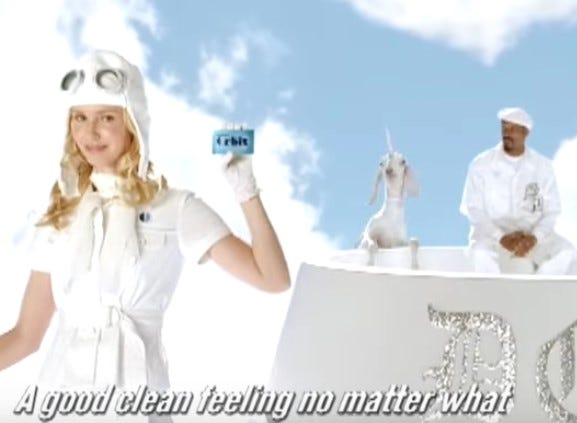
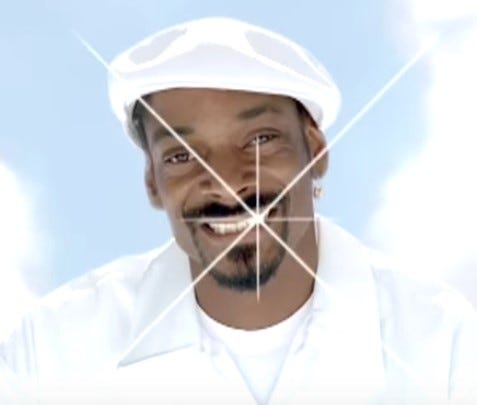
Also on the gum and space theme Juicy Fruit Starburst is owned by Mars.
Mind control triggers are often placed in advertisements Victoria said. This is perhaps obvious, but something I had previously overlooked. The adverts, short video programmes and messages are triggers to Gamma and Omega levels. Russian TV has adverts every 15 minutes, the quarter hour, the cycle of life, death part support.
Returning back to earth, Victoria was also programmed with Elektronic. The Adventures of Elektronik which brings in the subjects of cloning, twinning, robots and transhumanism which is the cults ultimate agenda. A robot named Elektronik escapes from Professor Gromov's laboratory. The robot looks exactly like a boy, and by accident they meet. Elektronic attends school for the boy, and even replaces the boy at home, but then the boy realises that the robot is taking over his life.
Tin Man Programming
The most used of the figures for robot programming is the Tin Man from the Wizard of Oz. The film is already probably the best known film used for mind control symbolism and programming.
The following is Tin Man programming according to Fritz Springmeier and Cisco Wheeler from The Illuminati Formula Used to Create an Undetectable Total Mind Controlled Slave. Trigger warning.
The Tin Man programming is [an] all purpose versatile program for what ever the master needs done, it means that the slave is a well oiled machine. Sometimes the slave is reluctant to do a job but he is being told that he is a well oiled machine. The exact words may vary with the mission, but the following are exact words, “LEAVE YOUR SHELL. ACTIVATE: MACHINE. COUNT DOWN ONE TO TIN….” “SOON WE’LL HAVE YOU PURRING LIKE A WELL OILED MACHINE. ALL OF YOUR MOVING PARTS ARE PIVOTAL AND GLIDING WITH EASE. MELT INTO MY HANDS. TAKE MY COMMANDS. I’LL HOLD YOUR JAW TO KEEP IT FROM SLIPPING WHILE YOU SLIP THROUGH A WINDOW IN TIME.”
Program code for slave to shatter their memory of an event (used with electroshock): “MIRROR MIRROR ALL AROUND ON THE CEILING ON THE GROUND SPINNING FASTER ROUND AND ROUND ARE YOU UP OR ARE YOU DOWN? ARE YOU DOWN OR ARE YOU UP? IT REALLY DOESN’T MATTER. BECAUSE WHEN THIS MIRROR BUBBLE BURSTS, EVERYTHING WILL SHATTER.” “GO KEY WEST IS KEY – several slaves have this code, related to Sen. Byrd & Oz programming.
GALAXY programming (for the end times) is also connected to the Oz programming. In upper level Illuminati slaves Dorothy in the Oz story will represent the Mother of Darkness alters, Ozma will represent the Ruler of the Castle, and Glinda will have the Great Book of Records. The ring of Glinda (from Glinda of Oz, p. 16) gives protection.
The Tin Man is a person which has been part of Illuminati ceremonies. The first initial ceremony that children of the Illuminati may remember is where a Tin Man with an ax watches over their presentation to the coven. If the parent presents the child, nothing is done, but if the parent refuses to present the children, then the Tin Man in the ritual will use his ax to sever the child’s head on a chopping block. (The Tin Man will also appear in Tin Man programming, and a Tin Man’s Castle may well be built in the Monarch slave’s head, but the point here is that the Tin Man is also part of ritual.)
Pg. 79 Book 3 Ozma of Oz: “I am only a ma-chine, and can-not feel sor-row or joy, no mat-ter what hap-pens.” This is teaching mechanical dissociation, and coincides with Tin Man programming. Fritz Springmeier and Cisco Wheeler The Illuminati Formula Used to Create an Undetectable Total Mind Controlled Slave
Notable takeaways from that are that Galaxy programming is end times programming and is connected to Oz programming. It is common programming, and slaves often have a Tin Man castle as structure for alters. It is also fear programming and the tin man is used in rituals.
Cisco Wheeler has the tin man twice in her collages…
Cisco Wheeler 2 – Alive in Technologyland – Illustrated Guide To Programming Mind Control [17]
The second time Cisco used the tin man he had glasses and she says it was meant to represent one of her main programmers, Mengele.
foxblog2 Cisco Wheeler 19 – Papa Bear / Ghost Riders [18]
The Tin Man was in the film, the Wizard of Oz which is already well known as a film used for mind control symbolism and programming. The Tin Woodman was first drawn in 1900 by William Denslow for the book by Frank Baum called The Wonderful Wizard of Oz. The tin woodman used to be a farmhand called Nick Chopper.
Later it was illustrated in various tales by John R Neill.
The Tin Man was made famous by the 1939 film Wizard of Oz, reputedly the most seen film in movie history.
The tin man was played by Jack Haley.
Russia has its own equivalent book, The Wizard of the Emerald City (Волшебник Изумрудного Города), a 1939 children's novel which is a re-narration of L. Frank Baum's The Wonderful Wizard of Oz by Russian writer Alexander Melentyevich Volkov.
Volkov was a maths teacher learning English and is said to have encountered L. Frank Baum’s book through his English teacher and translated it, adapting it to make it more relatable for a Soviet audience, [Ru]. Volkov’s adaptation was published under DETGIZ, an initiative to produce children’s literature aligned with Communist ideals. Essentially it was Soviet state propaganda. The authors surname Volkov means Wolf.
The artist for Volvok was Leonid Vladimirsky. He is Leo - Lion, the symbol of the Sun.
The most famous Russian image of the tin man is this one…
The Russian version of book has very recently been made into a film of the same name, The Wizard of the Emerald City, IMDB, Russian. The Russian film has a fairly standard tin man but perhaps with heavier set, more robotic look with bigger gauntlets echoing the robot gloves of Beyonce and others.
In the Russian film a powerful sorceress decides to destroy the human world.
Gingema wields powerful magik, including weather control and conjured a formidable tornado…
But the tornado was stopped by white magic…
…but not before it sent Ellie (=Dorothy) to the Magic Land.
Powerful weather magic was used, both to cause and to stop the tornado. Weather magic was covered in a previous post Theta Mind Control Experiment caused 1987 Moscow Hurricane [1], the programming for which is also at Lytkarino. A variety of methods are used including magik. Weather control and magik gets more and more relevant when disasters like catastrophic floods have just happened in Texas, with human intervention.
The Russian film is full of cult symbolism.
A huge statue carved from the mountain of a one eyed owl as the Emerald City, the witches headresses - even the “good” witch wears a brotherhood spiky headpiece and then there is the top hat of the Wizard. For more explanation and symbolism see this article by Veronica Swift, Russian Wizard of Oz Symbolism [16].
The full film should be available
At a slight tangent, the tin man reminded me of an article I wrote several years ago What happened to Nicole Kolpack? [19], which essentially was about a possible child sacrifice. This was the tin man mailbox at the Kolpack Yard.
I would now suspect that mind control might be involved, due to the tin man mailbox. As well as tin man programing, the top hat is often also a symbol of a top level magician in the occult, [16]. The tin man would be trigger to reinforce programming, especially of any mind control subjects who used the several mailboxes, but also of those who used the yard or drove past.
Knights are also a tin man programming connection. They trigger robotic / golem and steel legion programming.
Perhaps one of the best known knights was Walter Scott’s Ivanhoe who is also the most famous knight in Russia.
The knights and armour are similar to torture devices used in mind control programming on the unfortunate subjects of the torture.
Brotherhood of Steel
A public face of robot programmes is the Brotherhood of Steel, a fictional organization from the post-apocalyptic Fallout video game franchise.
I also wonder whether gears are a trigger.
This fictional brotherhood not only acclimatises the public to robots but it apparently promotes the New World Order as innocent. People play dress up / cosplay as the robot characters.
The Brotherhood of Steel, commonly abbreviated to BoS, is a post-War technology-focused paramilitary order with chapters operating across the territory of the former United States of America. It was founded by rogue U.S. Army officer Captain Roger Maxson shortly after the Great War.
Bionicle
Victoria said that she saw Bionicle figures in 1996 when she was underground at Lytkarino before the public release in 2001. “I played with the toys and I saw the movies earlier in DUMB, in 1996 - when I entered the school”, [fb32527].
Victoria thinks that Bionicle, with their colour and behaviour, have been designed to fuel feelings of horror and fear,
Bionicle proved to be a lucrative market. Lego diversified Bionicle into Knights Kingdom, Exo-Force, Ninjago, Legends of Chima and Nexo Knights with similar concepts. Then Mecha were made in Japan, spread largely via Manga and Anime, and as they have been so influential in the spreading of robotic culture, then first we need some background on them, for those that are not familiar.
Brief Introduction to Anime and Manga
Anime and Manga were niche media / art forms but very important in the development of these robotic concepts. They acted as a stepping stone to more mainstream mass market, but have now developed into mainstream and mass market in their own right.
Anime derived from a shortening of English animation is a hand-drawn and computer-generated animation originating from Japan. Outside Japan and in English, anime refers specifically to animation produced in Japan. However, anime, in Japan and in Japanese, describes all animated works, regardless of style or origin. Many works of animation with a similar style to Japanese animation are also produced outside Japan. Video games sometimes also feature themes and art styles that are sometimes labelled as anime.
Manga are comics or graphic novels originating from Japan. Most manga conform to a style developed in Japan in the late 19th century, and the form has a long history in earlier Japanese art. The term manga is used in Japan to refer to both comics and cartooning. Outside of Japan, the word is typically used to refer to comics originally published in Japan.
Anime and manga generated the support for robots and Mecha in particular.
Mecha History
This is faily detailed so that the development of Mecha can be followed through manga and then anime. Japan has an anime and manga genre/sector called Mecha which are similar figures to Bionicle and feature the Mecha in battle. It is also known as giant robot or simply robot and Mecha is split into two subcategories "super robot", featuring super-sized, implausible robots and "real robot", where robots are governed by realistic physics and technological limitations, [20].
Mecha started off in manga and then transferred to Anime and is now mass market in media such as video games and scale model robots.
1940 short manga Electric Octopus (デンキダコ, Denki Dako) featured a powered, piloted, mechanical octopus
1943 Yokoyama Ryūichi's propaganda manga The Science Warrior Appears in New York featured a sword-wielding, steam-powered, giant humanoid mecha.
1956 Mitsuteru Yokoyama's 1956 manga Tetsujin 28 was the first series in the mecha genre in Shonen, an iconic boy's magazine. The robot was made as a last-ditch effort to win World War II by the Japanese military, was remote-controlled by the protagonist Shotaro Kaneda, a twelve-year-old detective and "whiz kid". The story turned out to have immense mass appeal, and inspired generations of imitators.
1963 Anime of Mitsuteru Yokoyama's 1956 manga Tetsujin 28 in 1963
1972 Go Nagai defined the super robot genre with Mazinger Z, which was directly inspired by the former series.[1] He had the idea to create a mecha that people could control like a car, while waiting to cross a busy street.[1] The concept became "explosively popular", making the manga and anime into a success
1977 A large number of super robot anime had been created, including Brave Raideen and Danguard Ace. The market for super robot toys also grew, spawning metal die-cast toys such as the Chogokin series in Japan and the Shogun Warriors in the U.S., that were (and still are) very popular with children and collectors
1979 with the creation of Mobile Suit Gundam, a complex "space saga" that was called the "Star Wars of Japan" and birthed the real robot genre, which featured more realistic, gritty technology. Tomino did not like the formulaic storylines and overt advertising of the super robot shows he had worked on, and wanted to create a movie where robots were used as tools. While the response to Gundam was lukewarm at first, efforts by dedicated fans led to it becoming a success. It created a massive market for mecha model robots
1990 Patlabor, an animated movie directed by Mamoru Oshii that popularized the mecha genre and aesthetic in the West.
1995 Neon Genesis Evangelion, created by Hideaki Anno was a major influence on the super robot genre, arriving when the real robot genre was dominant on televisio
1998 first-person shooter Shogo: Mobile Armor Division developed by Monolith Productions.
2013 film Pacific Rim directed by Guillermo del Toro.
Films, once the completely dominant genre are now just one of many media and merchandising avenues. The franchises encompasses toys, animation, comic books, video games as well as films. There has also been cross fertilisation into other franchises, for example with Turtles Mecha above.
Transformers
Mecha were the basis for Transformers a Westernised franchise.
In 1984 the Transformers toy line was comprised of mecha toys from Takara's Diaclone and Micro Change toylines rebranded for Western markets. They are produced by American toy company Hasbro and Japanese toy company Takara Tomy, It primarily follows the heroic Autobots and the villainous Decepticons, two alien robot factions at war that can transform into other forms, such as vehicles and animals.
The basic models are
Optimus Prime: Transforms from a semi-truck to a robot.
Bumblebee: Transforms from a car (often a Volkswagen Beetle or Chevrolet Camaro) to a robot.
Starscream: Transforms from a fighter jet to a robot.
It is huge market - one of the highest-grossing media franchises of all time eg. In 2011, it generated more than ¥2 trillion ($25 billion) in revenue.
There are also Transformers that turn into animals.
A brain trained with Tetris would be useful in developing and designing toys such as Transformers or indeed robots and toys would attract those minds that thought in that manner.
The development of technology such as the transformer animals is the basis for the very robots that are now starting to monitor us and control us.
The controllers want humanity to largely die out, and be replaced with various types of slaves, robots, MK ULTRA’d slaves and for the so called Fourth Industrial revolution. It is all part of their baphometic and transhumanist agenda, Robot Police Dogs Gun Control and the Fourth Industrial Revolution, [20].
Battlestar Galactica
Another genre of robot beings, Cylons, are seen in Battlestar Galactica.
Battlestar Galactica is an American science fiction media franchise created by Glen A. Larson, which began with the original television series in 1978, and was followed by a short-run sequel series, Galactica 1980, book adaptations, original novels, comic books, a board game, and video games. A reimagined version aired as a two-part, three-hour miniseries in 2003, followed by a 2004 television series, and a prequel series, Caprica, aired in 2010.
Cylons are a cybernetic race whose goal is the extermination of the human species.
Cylons are mindless and ruled by Hive mind. Some look like humans. Note the red light / eye. In X men there was a character now found in comic books named Cyclop.
The post on this link described the torture required to make mind controlled slaves produce these theta effects, see Fire Wizards [fb32534].
Discussion
This is as far as I have got in unpacking this distilling this down. At least 3 strands are interwoven.
Mind Control
Programming and training slaves for their black army and specialist units ie their “end times” army.
Programming reinforcement and triggers for wider population of mind controlled slaves, perhaps 10% of the population.
“Soft” mind controlling public by stealth with mind control / behavioural modification concepts inherent in the products developed eg war, violence, changed methods of thinking, expanding the Overton window to luciferian / hivite concepts
Product Development
Products are tested by torture on child mind controlled slaves and then introduced later to public mass market - to those having undergone individual mind control and the wider public only under “soft” mind control
Products for controlling us / war eg. thermoptic suites, invisibility cloaks, robot dogs needed to implement the transhumanist agenda
Products to act as “bread and circuses” interim products as spin off technology and to generate money eg. toy figures, adult collectible figures eg Bearbrick and Kaws.
Media
Dissemination, advertising and popularising the products, technologies and mind control to the public.
Expansion of current markets and new markets formed eg films, anime, manga, comics, video games and probably much more.
New expanding artforms and genres like lolicon with Pharrell Williams, anime style mascot Luce for the Pope’s jubillee.
The strands all interact and feed into each other though.
Just as the controllers can judge the success of mind control by how many people buy Barbra Streisand tickets, and which sections are full, then they will also be able to judge the success of mind control by how many buy the products. Inbuilt into the products are concepts such as encouraging war and violence, division, duality of good and bad, fear, mind control programming, transformation / trance formation and no doubt much more.
This all helps bring nearer to fruition one overall aim of the cult, which is to produce robots and transhumans, as well as to make them acceptable to the public. When publicly accepted to a sufficient extent, the robots and transhumans will then under orders, control and remove most of the rest of the non bloodline humans. Then the ultimate goal of luciferians is said to be to storm the gates of heaven and usurp God.
We are taking part in and funding our own demise, with robots and AI who will soon not just be monitoring us, but be controlling where we are allowed to go. It is only one short step / order away from them attacking us. It is especially horrific that this is all developed by torture on mind controlled slaves, then introduced to the public supposedly for their benefit and it continues to spread control and mind control.
The first stage of all this should never be forgotten that innocent children are tortured and mind controlled. Slaves programmed and tortured in mind controlled zones underground, with the public cover being an industrial zone.
Elon Musk is close to the centre of the system, likely solemetric programmed, and is helping the transhumanist agenda with his Neuralink company. He is however doing good work on bringing attention to child abuse, for which he may receive torture himself.
Transformers implementing the transhuman agenda and trance-forming the public. Act now before it is too late. Please repost this to warn others.
Previous Robot Programming Posts
Mind Control Programming Zone under Lytkarino Industrial Zone, [fb32522]
Lytkarino Mind Control Robot Programming Part 1 [fb32527]
Robot Programming 2 - Robot Maria [fb32533]
Robot 3 Fire Wizards [fb32534]
Other Previous Posts with Information from Victoria
Theta Mind Control Experiment caused 1987 Moscow Hurricane [116]
Hurricanes 2 - Weather Modification, Projects, US Patents and Theta Mind Control [131]
MK Ultra with Bearbrick and Kaws [117]
Symbolism – The Colour Orange [127]
Pokemon Mind Control Programming [128]
Symbolism Red Colour Basic Knowledge [129]
Hivites in Russia [130]
Russia’s False History [131]
Links
[1] Tranhumanist agenda The Transhumanists are atheistic scientists who want to use genetic engineering, robotics and computers to put an end to humanity.
[fb32522] 2025 Mar 29 foxblog3 Mind Control Programming Zone under Lytkarino Industrial Zone https://foxyfox.substack.com/p/mind-control-programming-in-russian #lytkarino #mindcontrol #industrialzone
[fb32527] 2025 May 11 foxblog3 Lytkarino Mind Control Robot Programming Part 1 https://foxyfox.substack.com/p/lytkarino-robot-programming-part #lytkarino #mkultra #mindcontrol #robots #golem #automaton #ghostintheshell #bionicle #lego #karakuri
[3] https://en.wikipedia.org/wiki/Mecha_anime_and_manga
[4] https://en.wikipedia.org/wiki/Mecha
[5] https://news.tfw2005.com/
[6] https://tfwiki.net/wiki/Main_Page
[7] https://flashinglights.typepad.com/flashinglights/2008/11/beyonces-robo-glove-explained.html
[8] https://technology.nasa.gov/patent/MSC-TOPS-37
[9] Musik Palast How Korobeiniki (Tetris Theme) became one of the most influential Video Game Songs of all time
[10] Underground Cities https://archive.ph/4spWk Emerald City
[11] The Cartridge Twins Tetris - Game Boy OST
[12] https://en.wikipedia.org/wiki/Tetris_(Game_Boy_video_game)
[13] 2021 Nov 20 foxblog3 Travis Scott Astroworld Decode Gina Phillips Part 1 & 2 https://foxyfox.substack.com/p/travis-scott-astroworld-decode-gina #travisscott #demonic #astroworld
[14] wikipedia Cybernetics https://en.wikipedia.org/wiki/Cybernetics
[15] Scientist Norbert Wiener, who characterised cybernetics as concerned with "control and comm
[16] 2025 Jul 17 Veronica Swift Russian Wizard of Oz Symbolism https://veronicaswiftblog.substack.com/p/russian-wizard-of-oz-symbolism #oz
[17] 2023 Aug 31 foxblog2 Cisco Wheeler 2 – Alive in Technologyland – Illustrated Guide To Programming Mind Control https://cathyfoxblog2.wordpress.com/2023/08/31/cisco-wheeler-2-alive-in-technologyland-illustrated-guide-to-programming-mind-control/
[18] 2023 Sept 28 foxblog2 Cisco Wheeler 19 – Papa Bear / Ghost Riders https://cathyfoxblog2.wordpress.com/2023/09/28/cisco-wheeler-19-papa-bear-ghost-riders/
[19] 2021 Feb 21 foxblog1 What happened to Nicole Kolpack? https://cathyfox.wordpress.com/2021/02/21/what-happened-to-nicole-kolpack/
[19s] 2021 Feb 21 foxblog3 What happened to Nicole Kolpack? https://foxyfox.substack.com/p/what-happened-to-nicole-kolpack
[20] Fighting Monarch Robot Police Dogs Gun Control and the Fourth Industrial Revolution https://fightingmonarch.com/2023/07/25/robot-police-dogs-gun-control-the-fourth-industrial-revolution/
Appendix 1 Grok Manga and Anime List
Below is a plain text list of notable manga and anime films focused on robots, automatons, golems, or piloted robots (mecha), sorted by release date. Each entry is marked as manga (printed comic/graphic novel) or anime film (animated feature, OVA, or theatrical release) and includes themes of robotics, artificial intelligence, mechanical/golem-like beings, or giant piloted robotic suits. This curated selection blends autonomous robots (e.g., Astro Boy), automatons (e.g., Steamboy), and mecha (e.g., Gundam), emphasizing sci-fi, cyberpunk, and fantasy genres. The list is formatted for easy copying, as requested. Due to the vast number of titles, it’s not exhaustive but covers influential works. If you want more titles, a specific subgenre, or a particular era, let me know!
is a Japanese manga by Osamu Tezuka published in 1949.
Manga
1949 - Metropolis - Manga - Osamu Tezuka’s sci-fi manga, inspired by Fritz Lang’s film, about a robot, Maria, and human-robot tensions. First serialized in Manga Shonen. Adapted into a 2001 anime film.
1979 - Mobile Suit Gundam - Manga - Yoshiyuki Tomino and Hajime Yatate’s mecha manga about pilots controlling giant robotic suits in a space war. First serialized alongside the anime. Adapted into films like Mobile Suit Gundam I (1981).
1951 - Astro Boy (Tetsuwan Atom) - Manga - Osamu Tezuka’s sci-fi manga about a robot boy with human emotions, foundational for manga. First serialized in Shonen Magazine. Inspired anime films, including Astro Boy (2009).
1984 - Akira - Manga - Katsuhiro Otomo’s cyberpunk manga featuring cybernetic enhancements and robotic themes in Neo-Tokyo. Serialized in Young Magazine. Adapted into a 1988 anime film.
1986 - Ghost in the Shell - Manga - Masamune Shirow’s cyberpunk thriller about cyborgs, AI, and identity. Published by Kodansha. Adapted into a 1995 anime film. 1988 - Akira - Anime Film - Otomo’s adaptation of his manga, with cybernetic and robotic elements in a dystopian setting. Released July 16, 1988, a sci-fi landmark.
1995 - Neon Genesis Evangelion - Manga - Hideaki Anno and Yoshiyuki Sadamoto’s mecha manga about pilots operating bio-mechanical Evas to fight mysterious beings. First serialized in Shonen Ace. Adapted into films like The End of Evangelion (1997).
1999 - The Big O - Manga - Hitoshi Ariga’s manga, tied to the anime, about a pilot operating a giant robot in a noir-style city. First serialized in Comic Flapper. Includes piloted mecha themes.
2016 - Blame! - Manga - Tsutomu Nihei’s sci-fi manga about a lone wanderer in a robotic megastructure controlled by AI. Serialized in Monthly Afternoon. Adapted into a 2017 anime film.
Anime
1981 - Mobile Suit Gundam I - Anime Film - Directed by Yoshiyuki Tomino, the first of three compilation films adapting the Gundam manga/anime series. Focuses on piloted mecha battles. Released March 14, 1981.
1995 - Ghost in the Shell - Anime Film - Mamoru Oshii’s adaptation of Shirow’s manga, exploring AI, cyborgs, and consciousness. Released November 18, 1995, globally influential.
1997 - The End of Evangelion - Anime Film - Hideaki Anno’s mind-bending mecha film concluding Neon Genesis Evangelion, with pilots controlling Evas. Released July 19, 1997, ambitious and divisive.
2001 - Metropolis - Anime Film - Rintaro’s adaptation of Tezuka’s manga, centered on a robot, Maria, in a retro-futuristic city. Released May 26, 2001, visually striking.
2004 - Steamboy - Anime Film - Katsuhiro Otomo’s steampunk film about steam-powered automatons in Victorian England. Released July 17, 2004, action-packed.
2009 - Astro Boy - Anime Film - David Bowers’ adaptation of Tezuka’s manga, featuring a robot boy with superpowers. Released October 23, 2009, family-friendly.
2017 - Blame! - Anime Film - Hiroyuki Seshita’s adaptation of Nihei’s manga, depicting a robotic dystopia with AI constructs. Released May 20, 2017, on Netflix.
2020 - Mobile Suit Gundam Wing: Endless Waltz - Anime Film - Directed by Yasunao Aoki, a mecha film featuring piloted Gundam suits in a post-war conflict. Originally an OVA (1997), the theatrical version released February 25, 2020 (special re-release).
Notes
Themes: Includes autonomous robots (e.g., Astro Boy), cyborgs/AI (e.g., Ghost in the Shell), automatons (e.g., Steamboy), and piloted robots/mecha (e.g., Mobile Suit Gundam). Golems are rare but approximated by mechanical beings like Maria in Metropolis.
Piloted Robots (Mecha): Added titles like Mobile Suit Gundam and Neon Genesis Evangelion, which feature human-piloted giant robotic suits, distinct from autonomous robots.
Dates: Manga dates reflect first publication; anime film dates are for Japan theatrical or OVA release, per MyAnimeList, AniDB, and IMDb.
Scope: Prioritizes impactful works across robot types. Excludes lesser-known titles for brevity but includes mecha as requested.
Sources: MyAnimeList, AniDB, IMDb for accuracy. Recent X posts (as of May 12, 2025) highlight Ghost in the Shell, Akira, and Gundam as popular robot/mecha titles.
Below is the corrected and expanded plain text list of notable manga and anime films focused on robots, automatons, golems, or piloted robots (mecha), sorted by release date. It includes Electric Octopus (1940), The Science Warrior Appears in New York (1943), corrects previous errors (Metropolis 1949, Astro Boy 1951, Blame! 1997), and maintains all verified entries. Each entry is marked as manga or anime film, includes a brief description, and is formatted for easy copying.
1940 - Electric Octopus (デンキダコ, Denki Dako) - Manga - A short manga featuring a young boy piloting a powered, mechanical octopus-shaped mecha, one of the earliest mecha works. Published in 1940, exact magazine unknown due to obscurity. No known anime film adaptation.
1943 - The Science Warrior Appears in New York (科学戦士ニューヨークに出現す, Kagaku Senshi New York ni Shutsugensu) - Manga - Ryūichi Yokoyama’s propaganda manga depicting a steam-powered, sword-wielding giant humanoid mecha devastating New York. Published in 1943, a wartime work. No known anime film adaptation.
1949 - Metropolis - Manga - Osamu Tezuka’s sci-fi manga, inspired by Fritz Lang’s film, about a robot, Maria, and human-robot tensions. First serialized in Manga Shonen. Adapted into a 2001 anime film.
1951 - Astro Boy (Tetsuwan Atom) - Manga - Osamu Tezuka’s sci-fi manga about a robot boy with human emotions, foundational for manga. First serialized as Captain Atom in Shonen Magazine. Inspired anime films, including Astro Boy (2009).
1979 - Mobile Suit Gundam - Manga - Yoshiyuki Tomino and Hajime Yatate’s mecha manga about pilots controlling giant robotic suits in a space war. First serialized alongside the anime. Adapted into films like Mobile Suit Gundam I (1981).
1981 - Mobile Suit Gundam I - Anime Film - Directed by Yoshiyuki Tomino, the first of three compilation films adapting the Gundam manga/anime series. Focuses on piloted mecha battles. Released March 14, 1981.
1984 - Akira - Manga - Katsuhiro Otomo’s cyberpunk manga featuring cybernetic enhancements and robotic themes in Neo-Tokyo. Serialized in Young Magazine. Adapted into a 1988 anime film.
1986 - Ghost in the Shell - Manga - Masamune Shirow’s cyberpunk thriller about cyborgs, AI, and identity. Published by Kodansha. Adapted into a 1995 anime film.
1988 - Akira - Anime Film - Otomo’s adaptation of his manga, with cybernetic and robotic elements in a dystopian setting. Released July 16, 1988, a sci-fi landmark.
1995 - Ghost in the Shell - Anime Film - Mamoru Oshii’s adaptation of Shirow’s manga, exploring AI, cyborgs, and consciousness. Released November 18, 1995, globally influential.
1995 - Neon Genesis Evangelion - Manga - Hideaki Anno and Yoshiyuki Sadamoto’s mecha manga about pilots operating bio-mechanical Evas to fight mysterious beings. First serialized in Shonen Ace. Adapted into films like The End of Evangelion (1997).
1997 - The End of Evangelion - Anime Film - Hideaki Anno’s mind-bending mecha film concluding Neon Genesis Evangelion, with pilots controlling Evas. Released July 19, 1997, ambitious and divisive.
1997 - Blame! - Manga - Tsutomu Nihei’s sci-fi manga about a lone wanderer in a robotic megastructure controlled by AI. Serialized in Monthly Afternoon. Adapted into a 2017 anime film.
1999 - The Big O - Manga - Hitoshi Ariga’s manga, tied to the anime, about a pilot operating a giant robot in a noir-style city. First serialized in Comic Flapper. Includes piloted mecha themes.
2001 - Metropolis - Anime Film - Rintaro’s adaptation of Tezuka’s 1949 manga, centered on a robot, Maria, in a retro-futuristic city. Released May 26, 2001, visually striking.
2004 - Steamboy - Anime Film - Katsuhiro Otomo’s steampunk film about steam-powered automatons in Victorian England. Released July 17, 2004, action-packed.
2009 - Astro Boy - Anime Film - David Bowers’ adaptation of Tezuka’s manga, featuring a robot boy with superpowers. Released October 23, 2009, family-friendly.
2017 - Blame! - Anime Film - Hiroyuki Seshita’s adaptation of Nihei’s manga, depicting a robotic dystopia with AI constructs. Released May 20, 2017, on Netflix.
2020 - Mobile Suit Gundam Wing: Endless Waltz - Anime Film - Directed by Yasunao Aoki, a mecha film featuring piloted Gundam suits in a post-war conflict. Originally an OVA in 1997, theatrical re-release on February 25, 2020.
FoxBlog Social Media
foxblog3 Substack Blog 2021- present FoxyFox Substack Blog and Newsletter
foxblog5 new symbolism blog dec 2024 - foxblog5
foxblog4 wordpress old symbolism blog 2024 foxblog4
foxblog2 old wordpress symbolism blog foxblog2
foxblog1 old but gold wordpress blog 2012-2022 foxblog1
foxblog1Substack (archive of foxblog1) foxblog1 WordPress Archive on Substack
scarlet sage (Truth about Trolls)
Telegram foxblog Channel foxblog channel
Bastyon https://bastyon.com/foxyfoxy
Twitter https://twitter.com/foxblog3
ReSeeIt https://resee.it/feed/foxblog3
foxblog @gmx.com
RSS Feeds



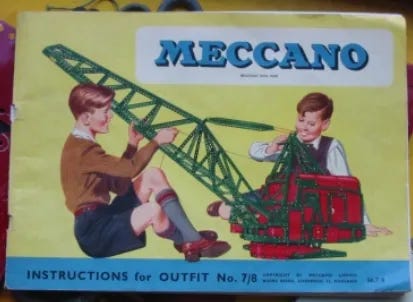
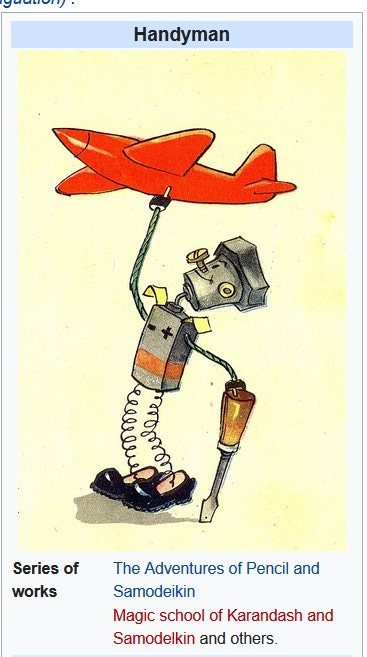





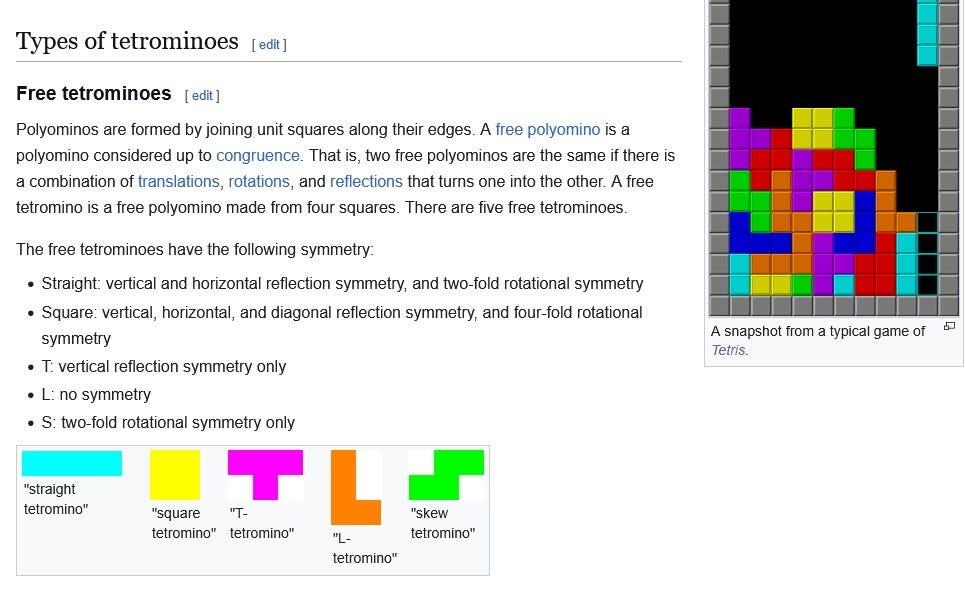

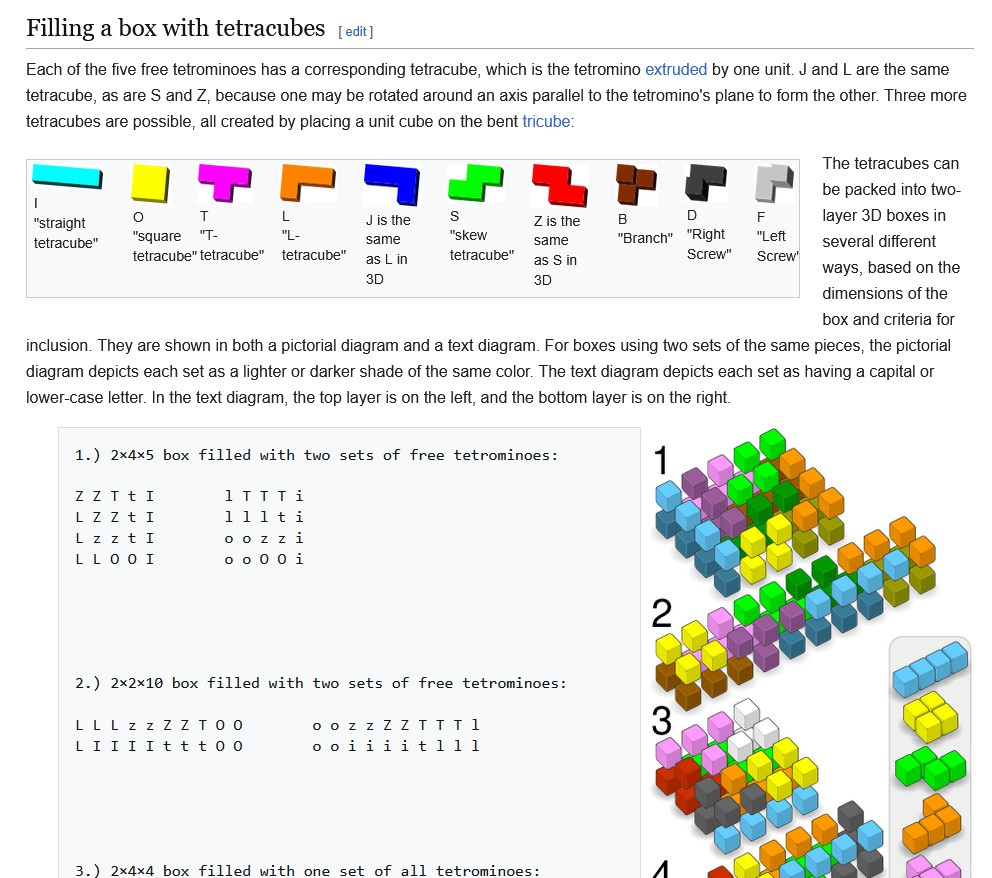

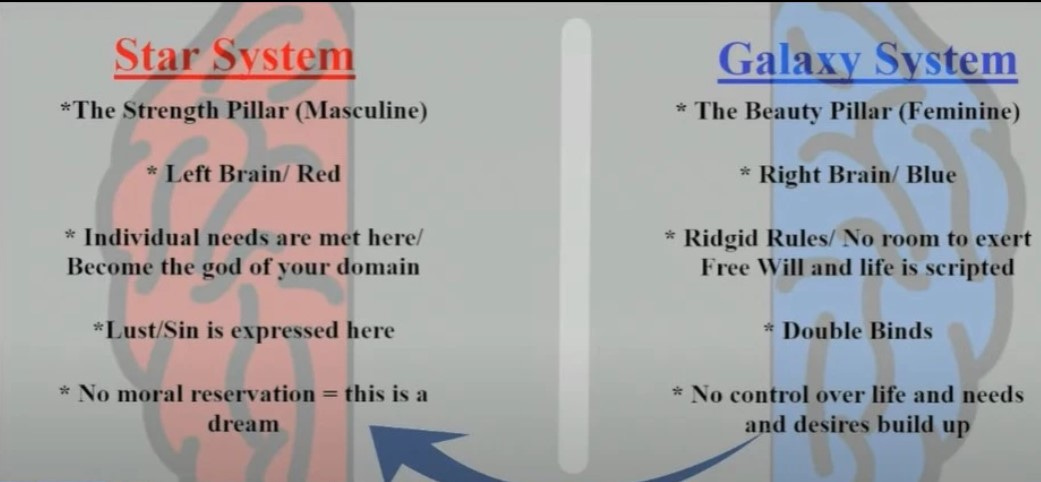






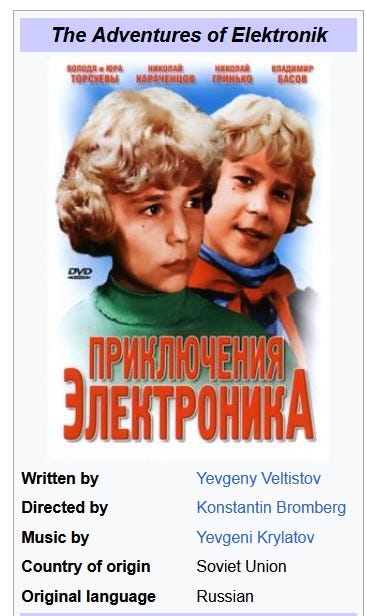


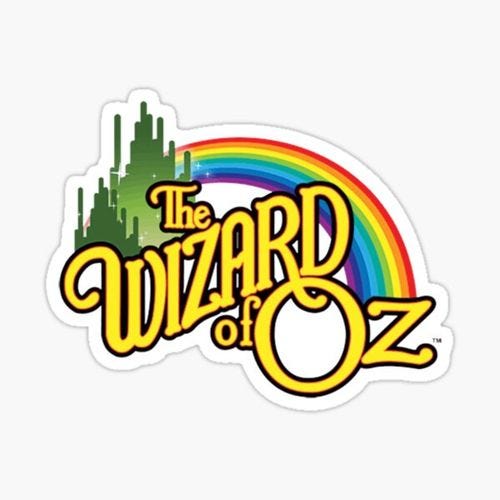
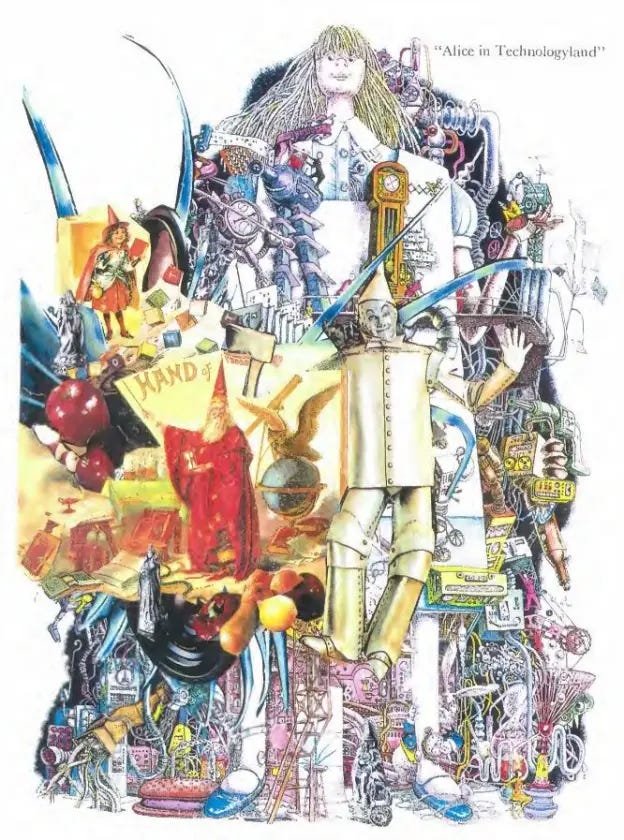


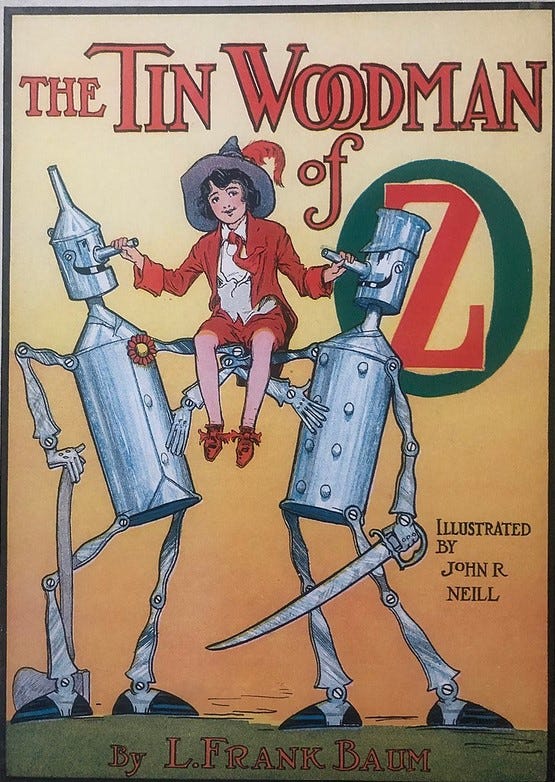

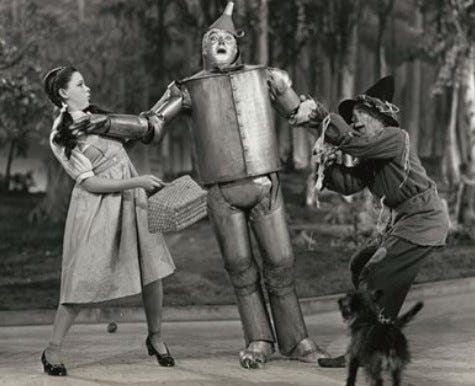


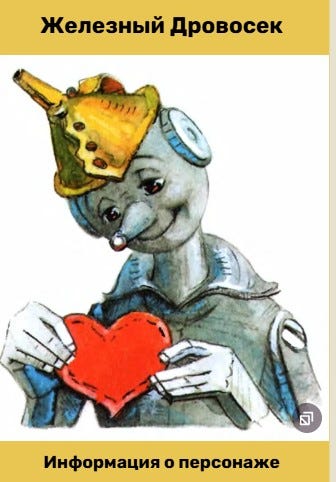



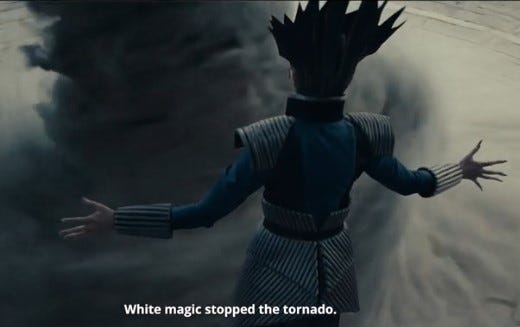
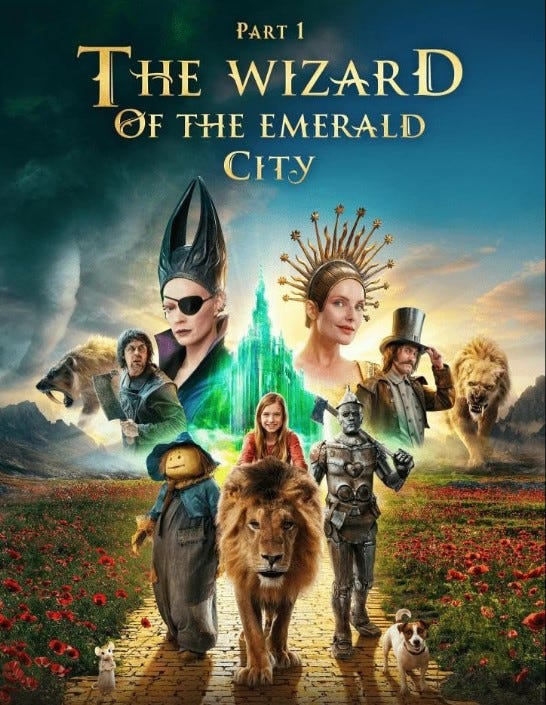


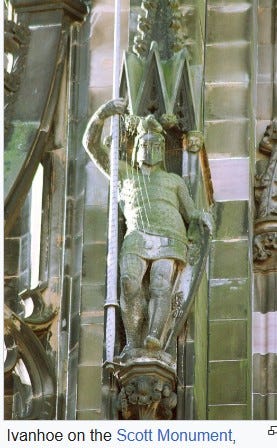


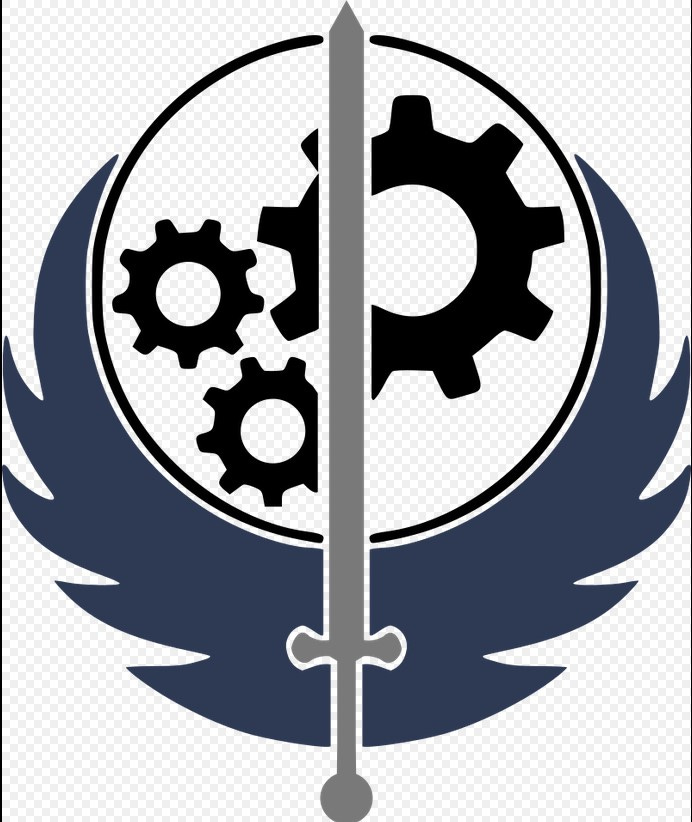
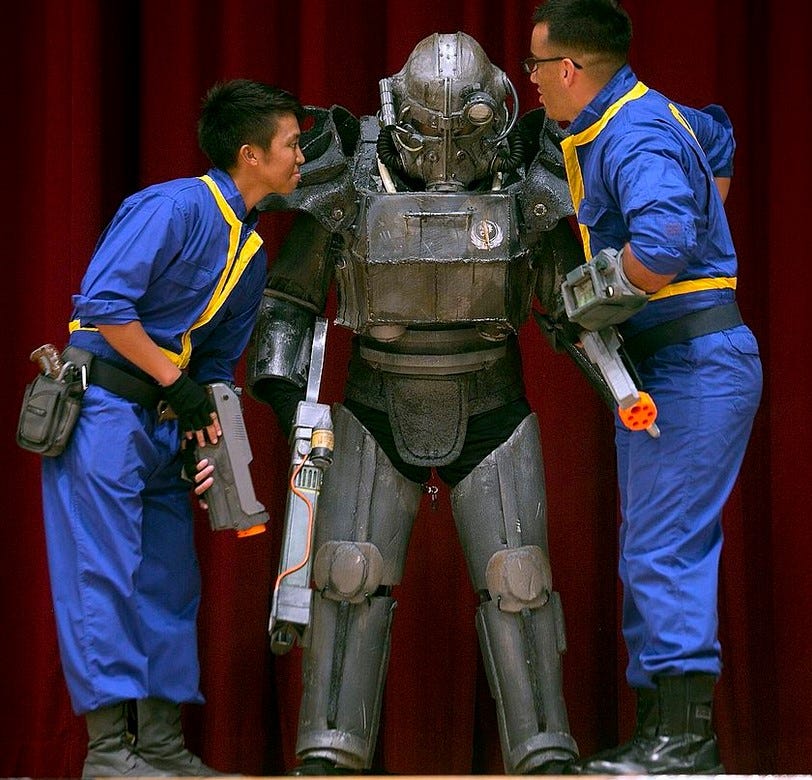


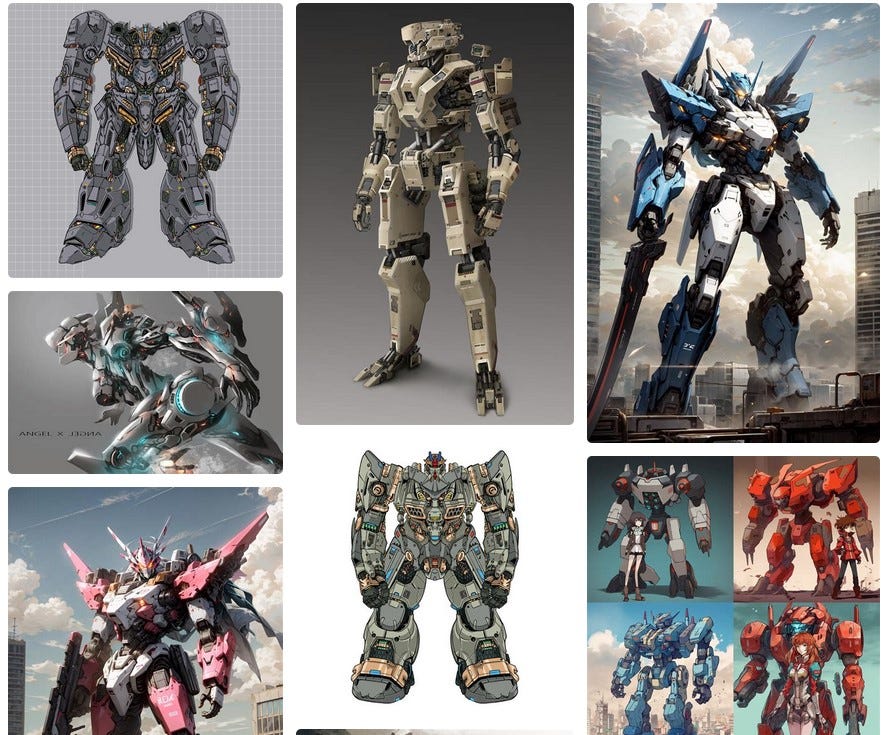










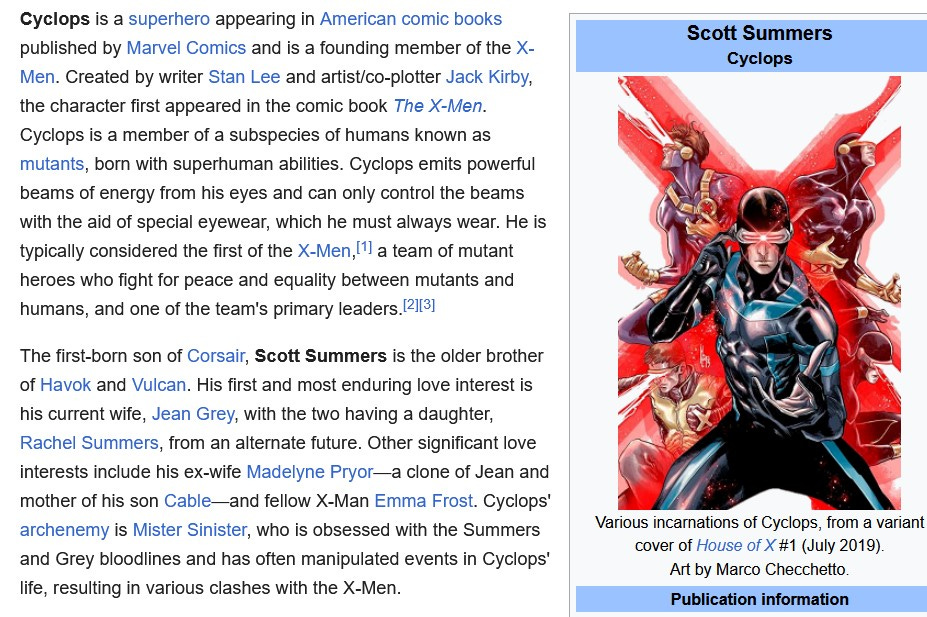


I don't know how you stand knowing what you know. I appreciate your courage. Thank you
I don't know how Elon Musk is really exposing child abuse, though. Elon Musk isn't really exposing anything, per se, as he's on someone else's leash, and anything out from his mouth is controlled, just like Trump.